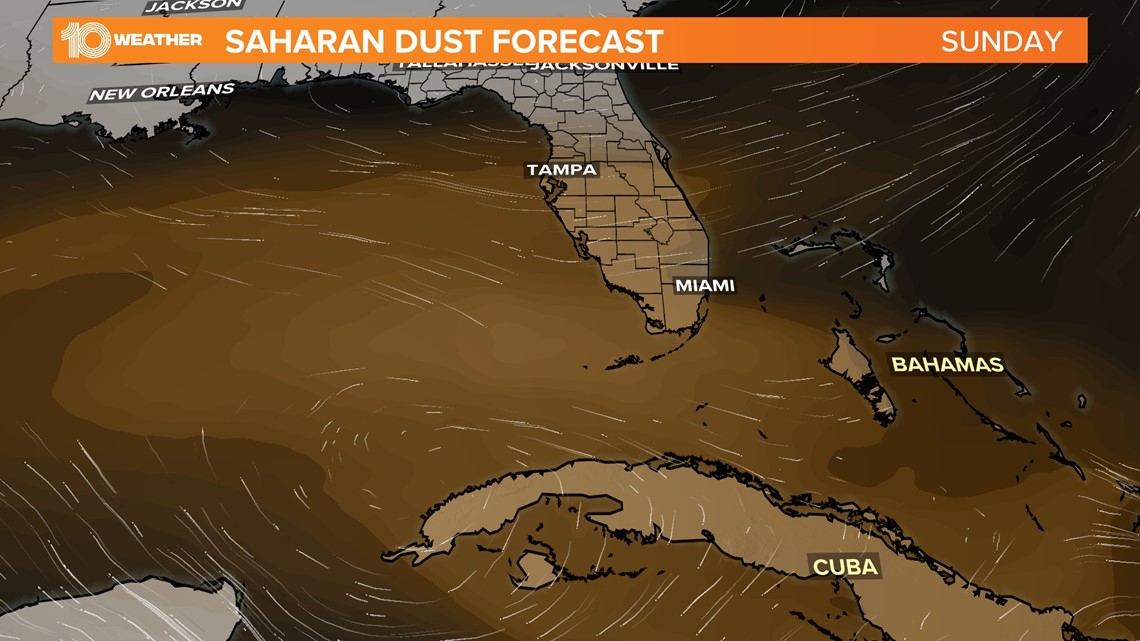ST. PETERSBURG, Fla. — Dust season is here again!
A robust plume of dry and dusty air traveling thousands of miles west from Africa is likely to invade the Gulf of Mexico this weekend.
The dust may turn the brightness down just a bit but will make the sunrises and sunsets more colorful, hazy and vibrant.
While it may look a little brown in the distance over the next few days, the dust is usually benign and is overall nothing to be concerned about. In fact, the Saharan Air Layer (SAL) has a few beneficial properties, especially during the early months of hurricane season.
What is the SAL?
The Saharan Air Layer is dry and dusty air mass that forms in the Saharan Desert in northern Africa. In late spring and early summer, trade winds pick up this mass of dusty air and carry it nearly 4,000 miles from its origin across the tropical Atlantic and can reach as far west as Texas.
When the dust is thick enough, satellites can even pick it up.
Here's a forecast image of where the dust may be Sunday:


More dust, fewer storms
When talking tropics, we like to see it on the satellite this time of year. Hurricanes do not thrive in incredibly dry and highly wind sheared environments. When tropical systems ingest dry air, they tend to weaken and lose structure.
The Saharan Air Layer’s dry air and strong winds can help inhibit tropical cyclone development and/or intensification, at least temporarily.
Saharan dust can also help to suppress storm activity locally. The dust “caps” the lower atmosphere, limiting thunderstorm growth. We tend to cut back on a few of those sea breeze-driven afternoon downpours when dry Saharan dust is present.
The dust doesn’t stick around forever; once it leaves, we’re back to our normal stormy pattern.
Will it affect my health?
Saharan dust is not an allergen; it is an irritant. With high concentrations of it in the atmosphere, the air that we breathe can become polluted, lowering the air quality and causing respiratory issues for people who may be a little more sensitive to polluted air.
It can also lead to coughing and itchy eyes — quite like what some may experience when encountering pollen or smoke.



